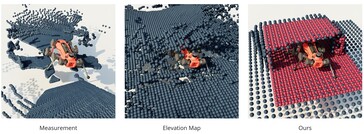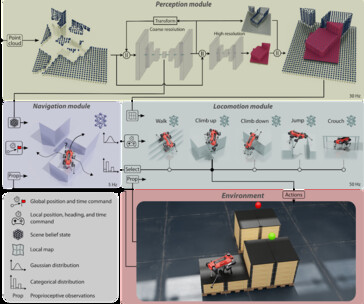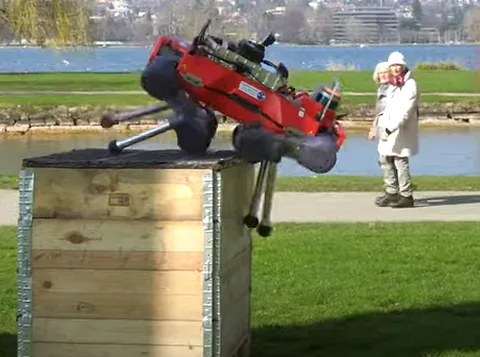Researchers in robotics at ETH Zürich have introduced a four-legged robot called ANYmal, which uses highly-trained AI modules for movement, perception, and location to navigate challenging terrain. The range of obstacles and terrains that quadrupedal robots may autonomously explore is increased by these cutting-edge components.
Prior research has demonstrated that robotic “dogs” can maneuver through well-kept hallways and buildings, as well as through hills and uneven terrain. However, these abilities have been dependent on human guidance during training, extended computation durations to ascertain the optimal path, and pre-existing environmental information. Bypassing these restrictions, the research team at ETH Zürich has developed the ANYmal, which, while being fully trained within an unsupervised Nvidia Isaac Gym simulation, can negotiate complicated surfaces and dynamically recover from falls.
Three modules comprising the AI brain
The vision module sees the world using six Intel Realsense depth cameras and a Velodyne LiDAR powered by a Nvidia Jetson Orin controller. Since laser and infrared scanning only returns the position of individual points, robots face roadblocks navigating underneath obstacles or to higher locations due to missing information. The ETH researchers work around this by reconstructing the world in 3D from the scans.
The movement module contains five actions: climb down, climb up, crouch, jump, and walk. Each was trained under increasingly difficult challenges. For example, the virtual robot was trained to crouch under lower and lower tables while moving forward, or jump from one platform to another while the gap increased.
The navigation module takes what the vision module sees and learns to combine it with the heading, position, and timing each movement skill requires to complete tough, simulated courses. The module was trained on 3000 test courses and learned to navigate over 96% successfully.
ANYmal in action
Once all three modules were trained in simulation, the AI software brain was installed in a 55 kg ANYmal D robot powered by two sets of Intel i7 CPU, 8GB RAM, and 240 GB SSD. Video of the ANYmal completing courses in real-life show its skillful ability to quickly overcome challenging terrain and obstacles that would stop other robots.







